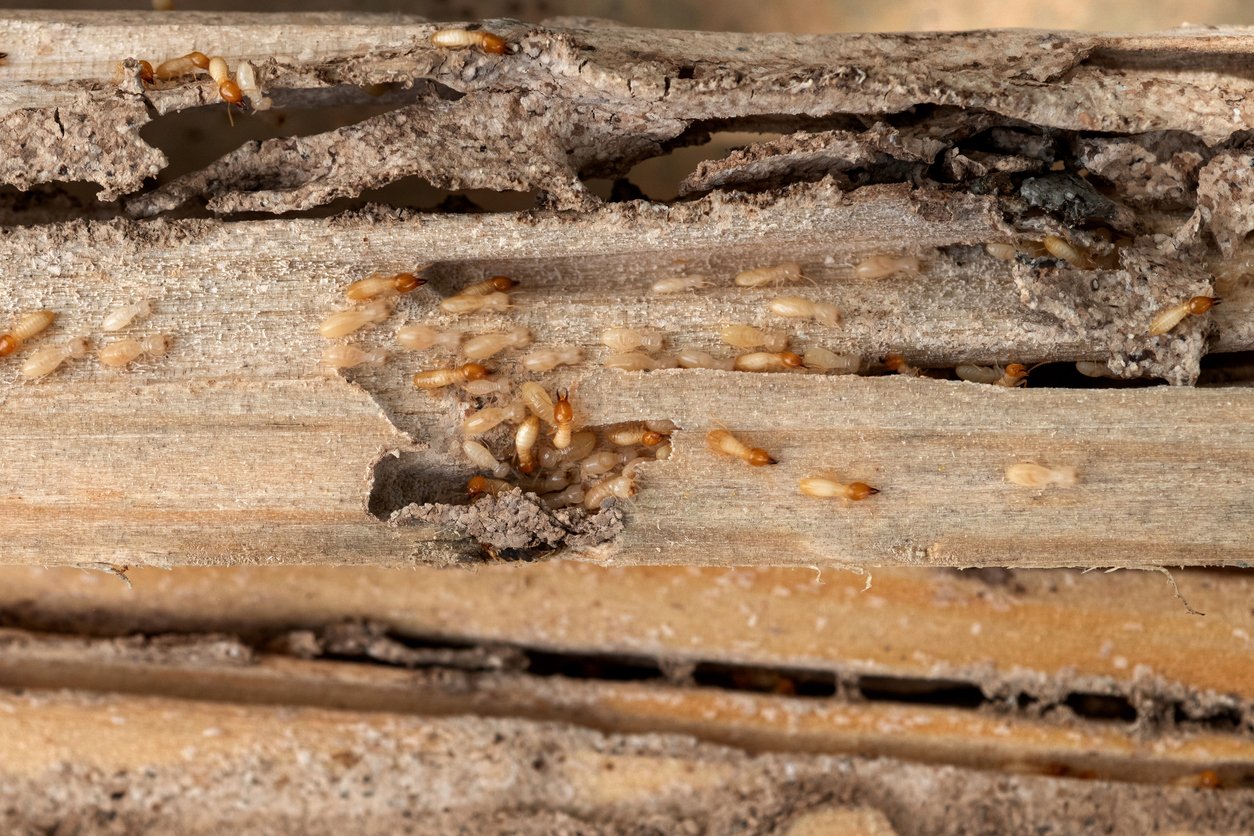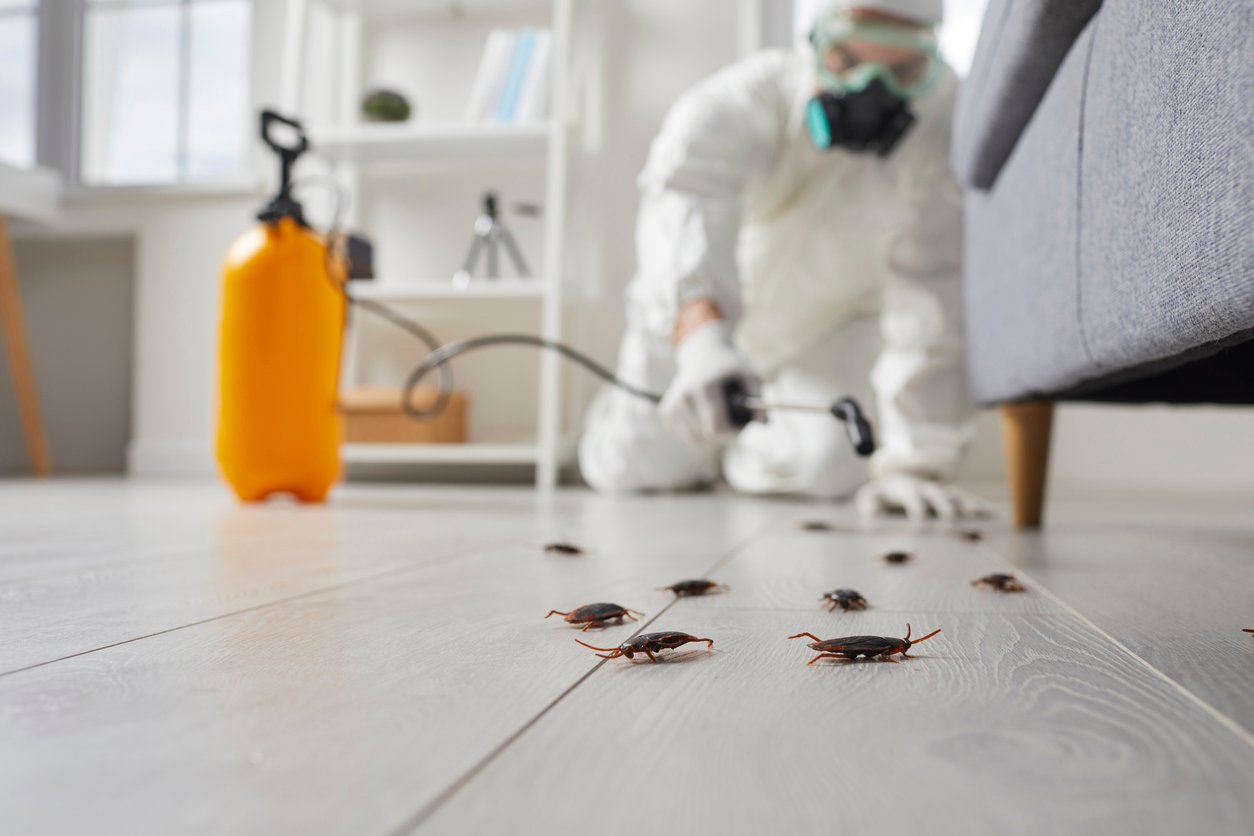What Bugs Look Like Fleas?

There is nothing that will make you itchier than thinking about an infestation of fleas in your home. These jumping pests cause irritating bites and can make you and your pets absolutely miserable.
Whether you’ve noticed tiny hopping insects in your home or have woken up with bites on your legs, you’ll want to figure out what kind of insects you’re dealing with. You might immediately think you have fleas in your home, but it’s also possible to have a flea look-alike infesting indoors.
The best way to identify the pest is to of course spot one in action. However, if you can’t find one, then identifying the kinds of bites and bite patterns can also work. Other identifiers, like symptoms of illness or parasites, can also help narrow down the types of insects that could be in your home.
Fortunately, no matter what kind of pest you’re dealing with, our team at Moxie Pest Control can help you identify and get rid of them.

What do fleas look like?
Fleas (Siphonaptera order) are small insects that drink blood to survive. They may drink blood from birds or mammals, depending on the hosts that are around. Your dog, cat, pet bird, or even you could have brought fleas in from outside or from another place where they already established themselves.
There are several different flea species, including the Oriental rat flea (Xenopsylla cheopis), rabbit flea (Cediopsylla simplex), cat flea (Ctenocephalides felis), dog flea (Ctenocephalides canis), and the northern rat flea (Nosopsyllus fasciatus). Despite a large number of species (over 2,500), most fleas do look similar.
Adult fleas are usually no longer than ⅛ inch. They are dark brown or reddish brown, though some people may mistake them for black. Fleas are also hard-bodied insects, and they look a little shiny. They may appear a little flat.
One of the most notable features of the flea is its large, powerful legs. A flea can jump up to 7 inches vertically. When jumping horizontally, it can go up to 13 inches. While that long-distance jump makes some people think that fleas can fly, they actually have no wings.
Only adult fleas are easy to see due to their size and color, but eggs and larvae are big enough to see with the naked eye if you can locate them. Flea eggs are about 0.5 millimeters in length, similar in size to a grain of salt. Their outer shell is called a chorion and is off-white in color and shaped like an oval. Larvae are active in the evenings and overnight, but they are often hidden away in carpet fibers or bedding when inside. They’re also translucent white, which means they’re difficult to see even under the best conditions.
Pupae are in cocoons that are rarely seen due to their size and location. Cocoons are normally hidden deep inside carpets or tall grasses.
Scientific Names:
An organism’s scientific name is highly descriptive of what it looks like or how it acts. “Siphon” means pipe—much like the English use of the word “siphon”—and describes mouthparts that look like a straw. “Aptera,” the second part of the flea’s scientific name (Siphonaptera), means “wingless” in Greek.

How to know if you have fleas
There are some common signs of a flea infestation that you can look for. On pets, one of the easiest things to do is to look for “flea dirt.” Flea dirt looks like little flecks of pepper and is normally around the groin or ears. That “dirt” is actually dried blood. You can use a wet cotton swap to rehydrate the flecks. If they turn red, then there is a chance at least one flea recently fed on your pet.
Another way you could become suspicious of fleas is if you start getting clusters of bites on your ankles or legs. Flea bites tend to be itchy and painful, so both you and your pets could be itching and scratching in response.
A third sign of fleas? Tapeworms. If your pet has unusual “pieces of rice” around its rear, then you may be looking at part of a tapeworm. Tapeworms are intestinal parasites often transmitted by fleas, so if you see them, be on alert. You’ll need to get your pet treated, and you may want to speak with your medical provider about the risk of intestinal parasites as well.
The final way to know that you have a flea infestation is if you see them. Adult fleas jump around, so you may see them land on you. If you’re brushing your pet’s fur, you may see them on its body as well.
If you see a single flea, there may be 100 or more immature fleas already growing, so it’s time to take action.

What are common flea look-a-likes?
You may be surprised to know that there are several insects that people often confuse with fleas. Commonly mistaken insects include:
- Ticks
- Carpet beetles
- Bedbugs
- Lice
- Fungus gnats
- Flea beetles
While fleas are likely to bite your ankles and cause itchy welts, those signs alone aren’t enough to be sure fleas are what you’re dealing with. Why not? Other species of insects can sometimes bite and irritate you, too. Some jump just like fleas, and others might look like them even when they’re not.
Check out several common doppelgangers of the common flea, so you can learn more about flea look-alikes that might be plaguing your home:
Ticks
What do they look like?
There are around 825 species of ticks (suborder Ixodida), so they don’t all look the exact same. However, most have eight legs and look almost like tiny spiders. They have one large, oval-shaped abdomen and a small head.
Adult ticks can be up to a little more than an inch in length, but some species are small and reach only 15 mm or less.
Ticks are usually brown, black, or have a reddish tint if they’ve just fed.
Where do they live?
Ticks live in different places based on the species, but many live in fields or the woods.
They make their way up blades of grass and wait for unsuspecting hosts, like deer or dogs, for example, to cross their paths. When the host gets close enough, they grab onto them and latch on to feed.
After feeding, ticks fall off the host.
What do they eat?
Ticks eat blood during every stage of their life cycle after hatching. They need blood to survive.
Many ticks die because they cannot find enough hosts to sustain them. However, for those that do, they can live up to 3 years as they pass from one host to the next and grow from a larva to a nymph and adult.
Interestingly, many kinds of ticks don’t stay with one single species as a host. They may prefer different kinds of hosts as they grow, starting with birds or small animals and working up to mammals like deer or humans.
How do they act?
Ticks are able to recognize mammals’ body odors, breath, body heat, vibrations, and moisture, which is how they know to look for a host nearby.
Some have eyesight that is good enough to look for shadows cast by a mammal walking or flying past.
Ticks go on “quests” to find the right host. The reason for questing is that these pests can’t fly or jump onto hosts. They have to walk to where they want to wait for the host and then try to climb onto them as they brush past.
Noteable facts
While not all ticks will spread illnesses, many carry pathogens that can lead to illness. For example, the brown dog tick can spread Rocky Mountain spotted fever, and other kinds of ticks can even cause paralysis.
Bedbugs
What do they look like?
Bedbugs (Cimex lectularius and other species) are small, oval-shaped insects. They can be dark brown or reddish brown depending on if they’ve recently fed.
They appear flat when they have not eaten or balloon-like if they have.
They are usually no longer than 5 to 7 mm.
Adult bedbugs are classified as “true bugs” and belong to the order Heteroptera. They have a beak with three segments, wings that cannot be used to fly, and antennae that are segmented into four parts.
These pests often produce a sweet, musty odor.
Where do they live?
In homes, bedbugs usually live in the seams or tags of mattresses, in cracks in a bed frame, in or around the mattress springs, and in the seams of cushions of chairs or couches. They can sometimes get into window or door frames as well as other tight spaces in bedrooms or other areas of the home.
What do they eat?
These pests feed on blood. While you might notice them most once you’ve become their meal, they can also feed on pets like dogs and birds.
When bedbugs feed, it can take up to 12 minutes to do so. They must eat at least one time before developing to the next stage of their life cycle. Males and females have to eat blood to mate—they must eat at least once every two weeks.
How do they act?
Bedbugs cannot fly. They are also unable to jump.
Despite that, they’re sometimes confused with fleas because they bite mammals or birds for their blood meal. Each bite can leave behind a small welt, which is similar to what happens with flea bites.
Bedbugs normally come out at night and crawl quickly. It’s unlikely to see them during the day, since they usually hide.
Noteable facts
Bedbugs usually bite in lines or zigzag patterns that can be found anywhere on the body. It’s common to find blood stains on bedsheets or clothing when bedbugs are present.
Interestingly, some people don’t react to bedbug bites at all, so bites alone sometimes aren’t a good differentiator between insects or bug species.
Carpet beetles
What do they look like?
Carpet beetles (including (Anthrenus scrophulariae) can look different depending on the species, but most are small, blackish in color, and hard to the touch.
Carpet beetles are shaped like an oval and may be up to 3.8 mm in overall length. They generally have their heads tucked under their prothorax, meaning you’re unlikely to see it when looking down at the beetle from above.
Some carpet beetles have spots or coloration. For example, the Anthrenus scrophulariae has white and yellow-orange or red scales that form a pattern on its back.
They have six legs and two antennae.
Where do they live?
Carpet beetles can be found all over the United States. In fact, they’re a worldwide species.
In the U.S., you’re more likely to see this beetle in northern states. They will lay their eggs in carpets or other kinds of textiles. Sometimes, they invade animal specimens or clothing, too.
What do they eat?
Adult carpet beetles don’t eat fibers or textiles. Instead, they feed on nectar and pollen. So, if you see adults, you don’t have to worry about those adults making holes in your clothing or damaging your carpets.
The problem with finding adults in the home is that they could lay eggs. If the eggs are laid in your carpets or other textiles, then the larvae may emerge and start chewing away at their home. It takes around two months (66 days) for larvae to grow into pupae, and they can cause significant damage during that time.
How do they act?
Generally speaking, carpet beetles mind their own business and won’t bother you. Adults tend to come inside when doors or windows are left open.
There is a risk of allergies or skin irritation if you come into contact with larval skins that have been shed.
Noteable facts
Adult carpet beetles like to eat pollen and nectar, interestingly preferring white or cream blossoms. So, if you want to deter them, consider choosing plants that bloom in color instead, and avoid plants such as daisies, buckwheat, or wild asters.
Lice
What do they look like?
Head lice (Pediculus humanus capitis) spend all of their lives on human heads. They do not affect other parts of the body, though there are different species that do.
Where do they live?
Lice, or head lice, make up a problematic species of insects that like to call humans home. They usually live on people’s scalps. Similar species, like body lice, can also live in your clothing or on your bedding.
Head lice spread from person to person easily.
They are particularly common among children in schools and can spread quickly, especially when hair brushes or hair accessories are shared.
What do they eat?
Lice cause itchy skin and will bite because they feed on blood. The bites cannot be felt by most people. Unfortunately, the saliva in the bites is irritating, and each bite could feel intensely itchy, like the feeling you get from a mosquito bite.
How do they act?
Lice can’t jump or fly. They lay their eggs on hairs on the head, and they travel to the scalp to feed.
Head lice are most likely to be found behind the ears or along the back neckline. They will also traverse the entire scalp.
Noteable facts
Lice don’t carry diseases or spread diseases between people. They also will not infect pets, so even if you have an outbreak in your house, it’s only human members of your family who need to receive treatment.
Flea beetles
What do they look like?
The flea beetle (Altica spp.) is a dark beetle that has the ability to jump long distances. They have hard outer shells and may have a metallic sheen of bronze or purple. They’re normally shaped like ovals.
Male beetles are around 3 to 9 mm, and females can grow larger. Their antennae are segmented into 11 segments.
Where do they live?
Flea beetle species are present all over the world, so you can find them almost anywhere in the U.S. There are a few species common here, including the Altica chalybea, Altica corni, Altica sylvia, Altica ignita, Altica foliacea, and Altica litigata.
What do they eat?
Flea beetles are problematic because they feed on plants important to the U.S. economy. They may feed on common foods such as strawberries, blueberries, and grapes. They also feed on dogwood and crape myrtle plants.
How do they act?
These pesty beetles can have up to three generations a year and are often found eating the foliage of their host plant. They often feed in clusters, so it’s easier to identify when an infestation is present.
With enlarged hind legs, these beetles can jump. Research suggests that they jump to avoid predators.
Noteable facts
Flea beetles are damaging to crops all over the U.S., and they are found in all kinds of habitats. They also sometimes enter nurseries or eat away at weeds. It’s possible for large groups of beetles to infest an area, so it’s important to get rid of them if they are present to prevent damage to plants and crops.
Fungas gnats
What do they look like?
Fungus gnats (Orfelia and Bradysia spp.) are small flying insects that have dark coloration. They are similar in appearance to mosquitoes.
Adult fungus gnats have long legs and segmented antennae. Usually, their wings are clear or light gray. Those in the Bradysia species have Y-shaped veins in their wings.
Where do they live?
Fungus gnats love light, so it’s common to see them rush up to glass windows and doors when you turn on your indoor lights in the evening.
Inside, they enjoy staying around potted plants or might hang out around compostable materials.
Outside, they live in soil, around wet mulch, and in foliage.
What do they eat?
These flying insects don’t bite people or animals. They sometimes harm plants while in the larval stage, since they may cause root damage.
These pests eat organic debris. If you have potting soil inside, they might settle there to eat it. Outside, they’ll eat root hairs, fungi, grass clippings, and more.
How do they act?
Fungus gnats aren’t great flyers, so they don’t move around a lot once they’re inside your home. You might see them resting on your potted plants, for example, or on the ground around wet mulch outside.
In the case that you have many larvae, there could be slime trails on your plants or in the soil.
Noteable facts
Fungus gnats are known as nuisance pests and tend to have overlapping generations. They’re most common inside during the winter and spring because temperatures are warmer than outside.
All of these pests have something in common with fleas, but not all of them have the same impact in your home. If you believe that you’re dealing with fleas but you’re unsure, it’s time to call in the professionals. Reach out to our field experts at Moxie Pest Control, and we’ll help you identify—and get rid of—pests that are making your home uncomfortable.
Let our experts help you get rid of pests
If you have fleas in your home or are living with a pet that has fleas that made themselves at home in its fur, we know how frustrating it can be to try to get rid of them. Fleas can quickly breed and spread, and you end up with irritating bites as a result.
No matter what creepy crawlies have you itching for answers, we can help. At Moxie Pest Control, our experts are here to help you identify the problem and offer solutions. Get in touch with us to get a free quote and learn which pest package is right for you.



